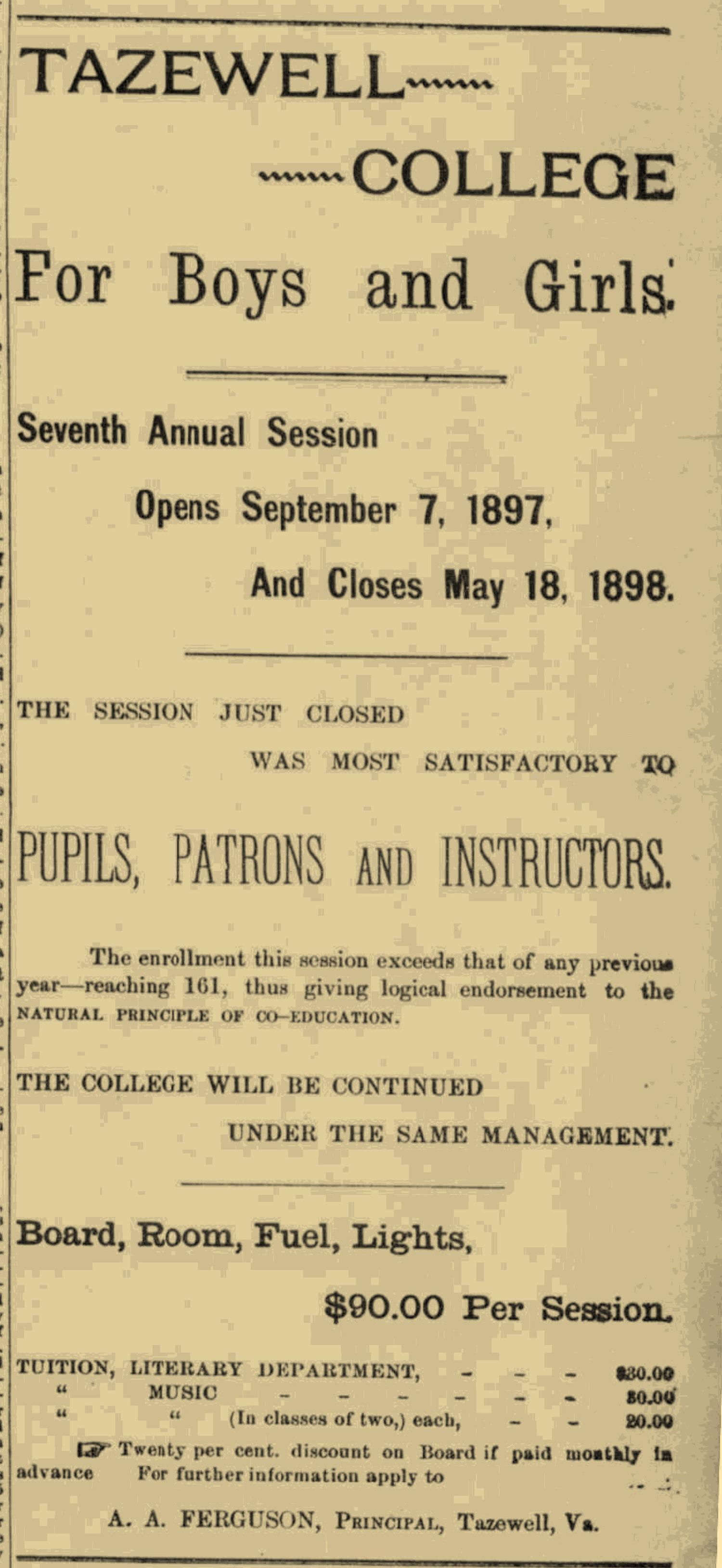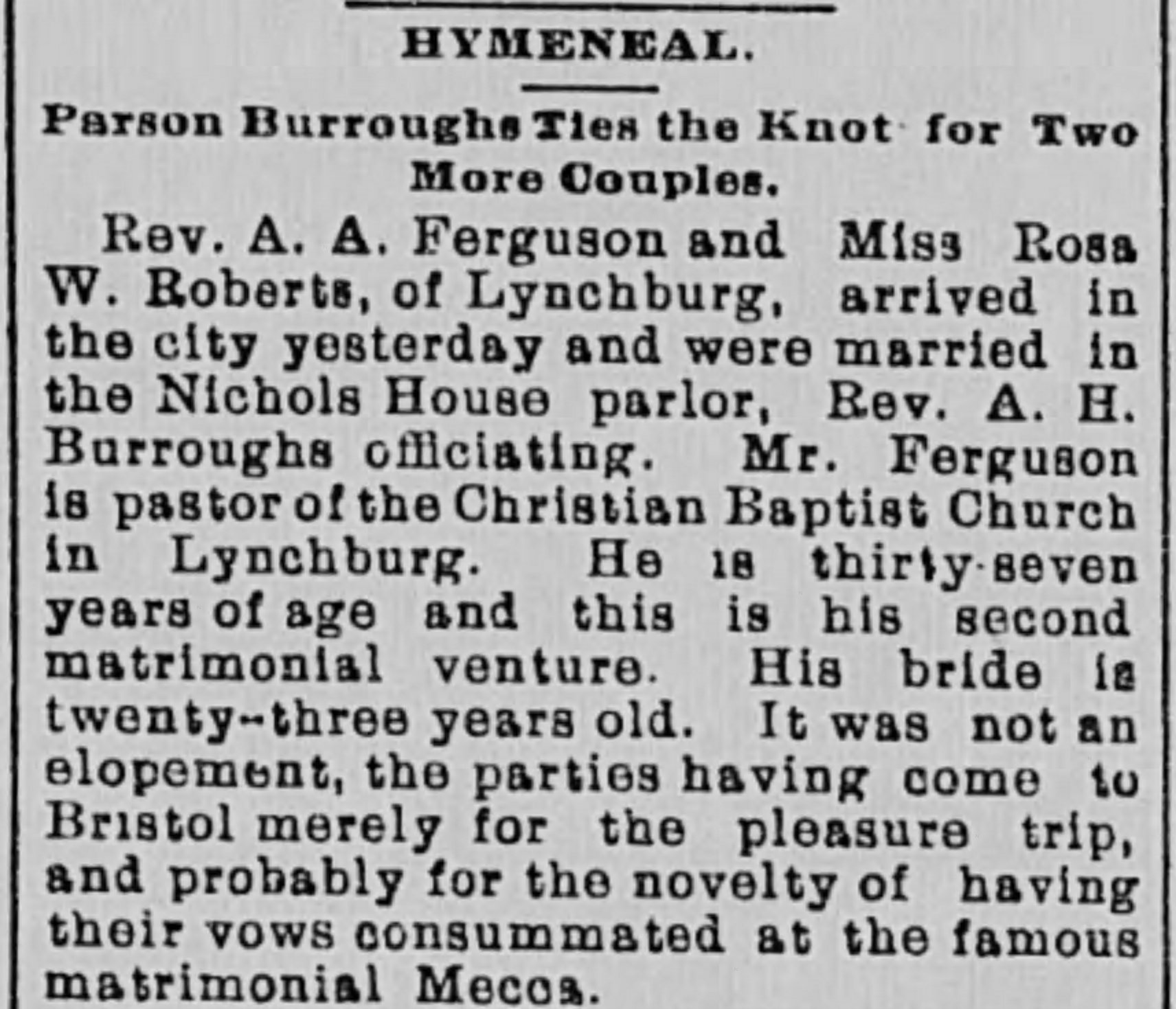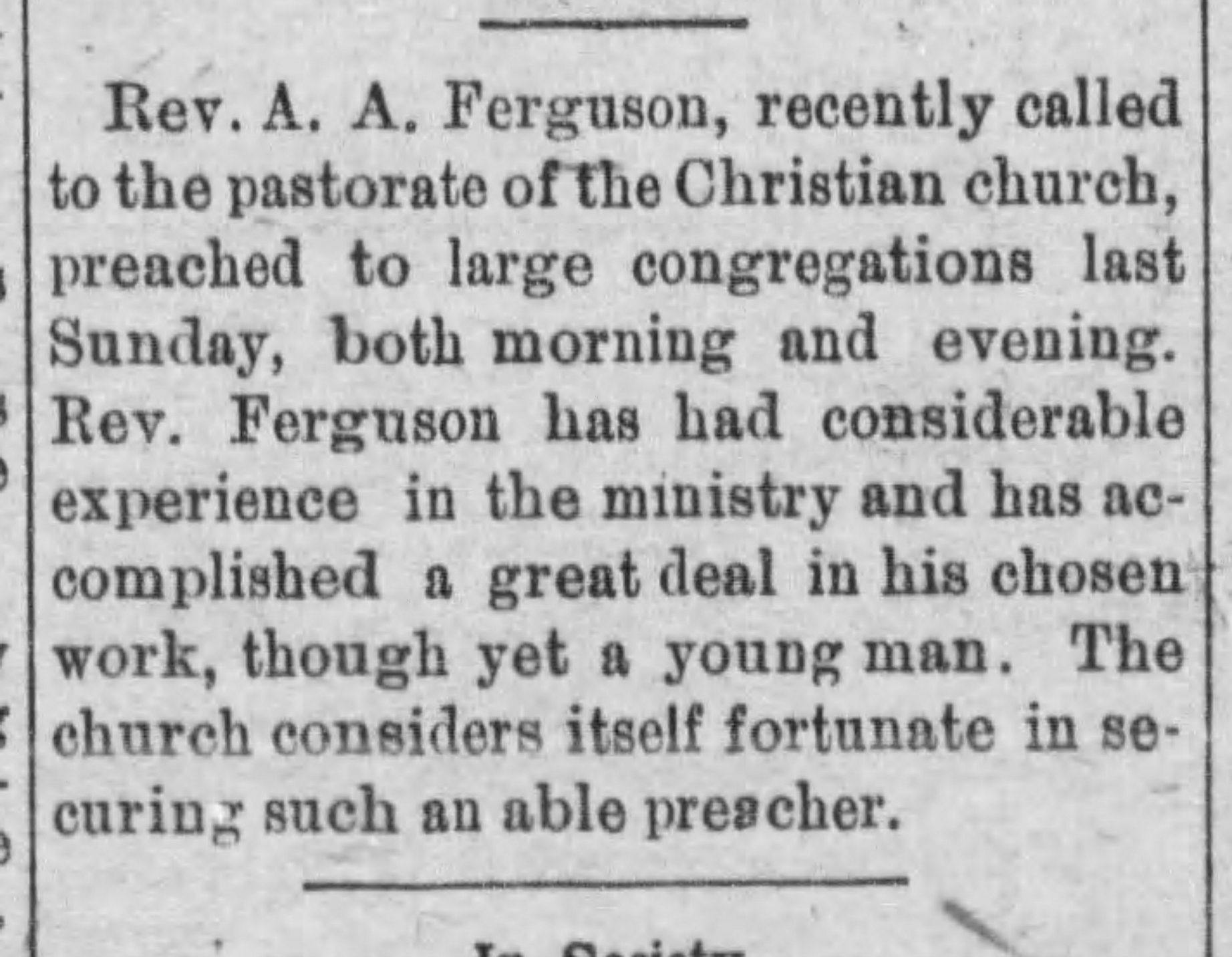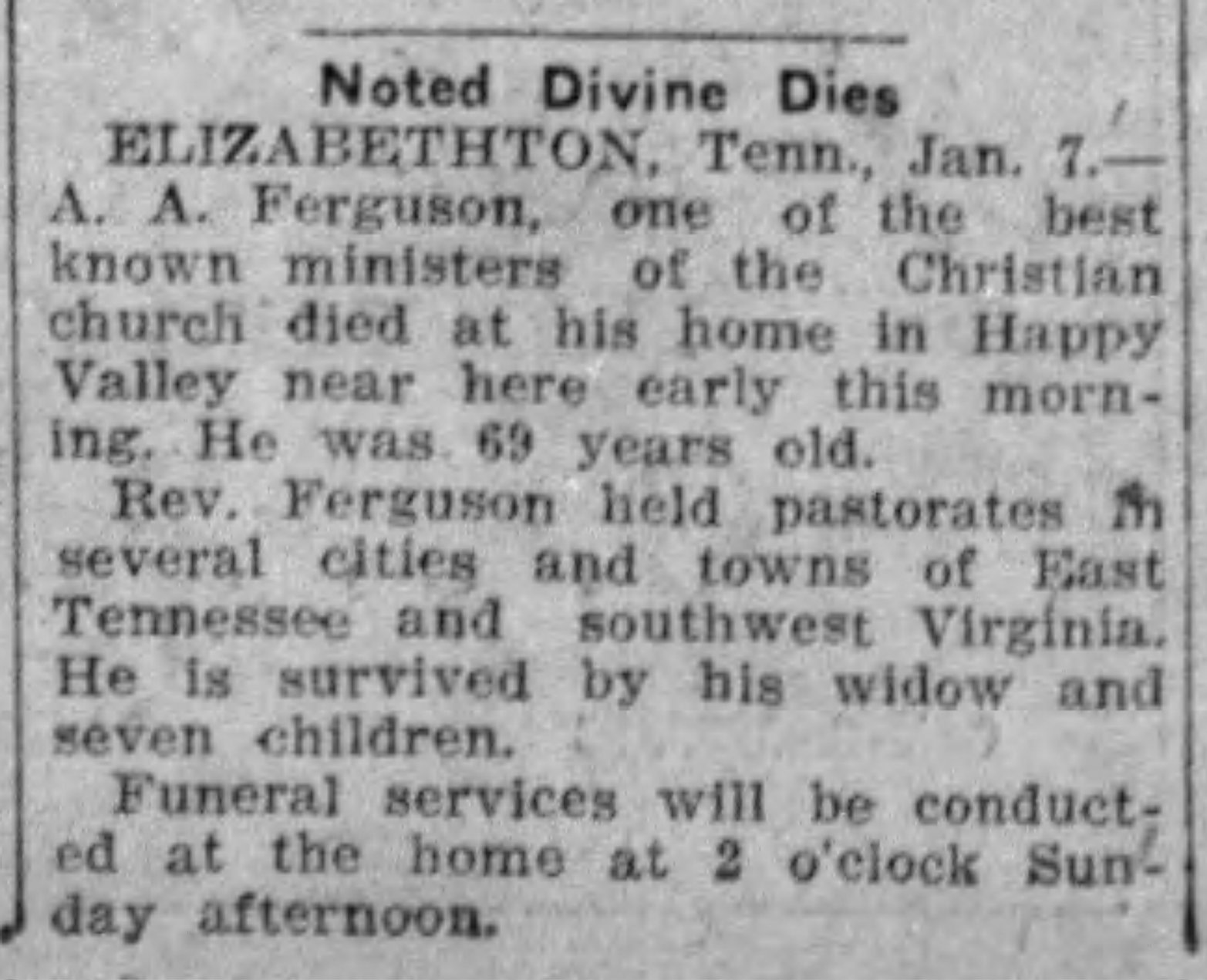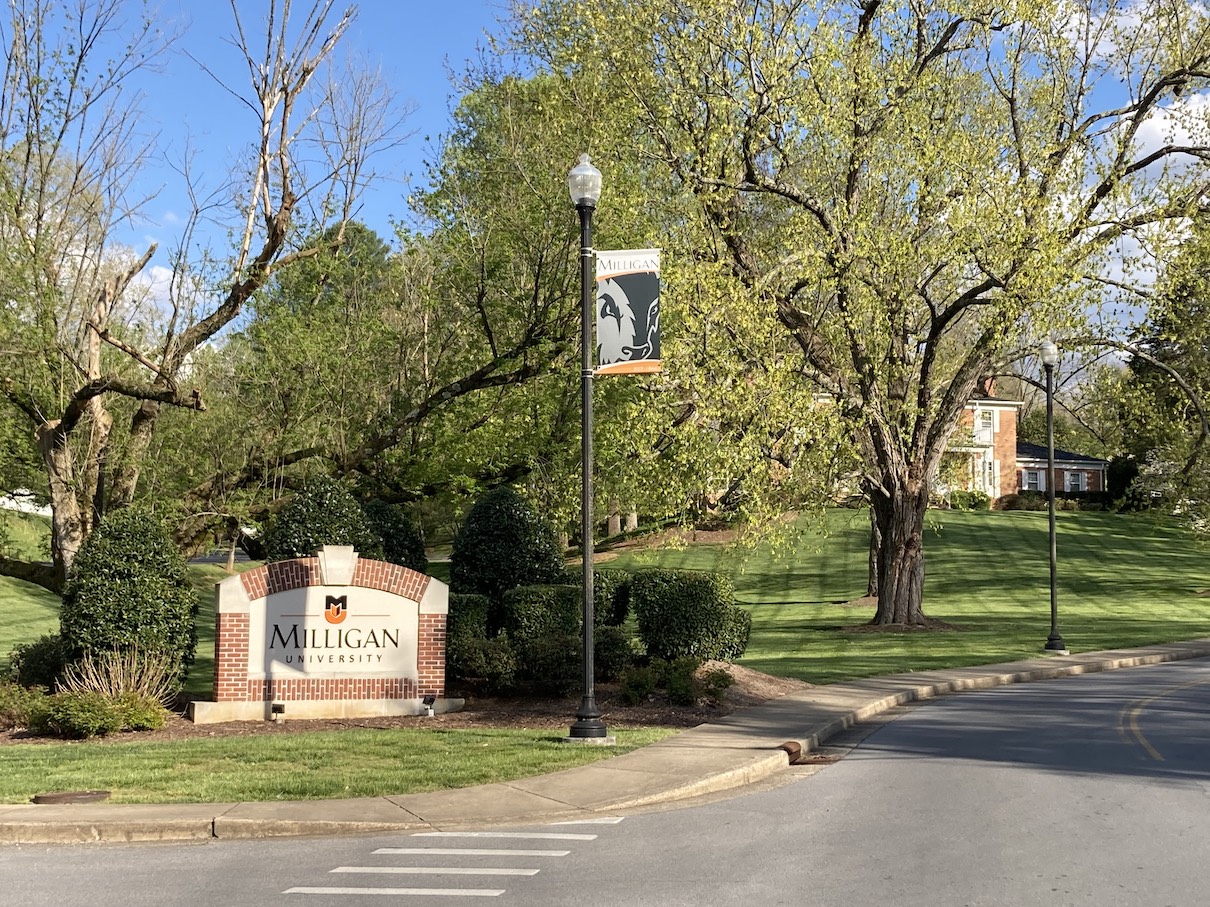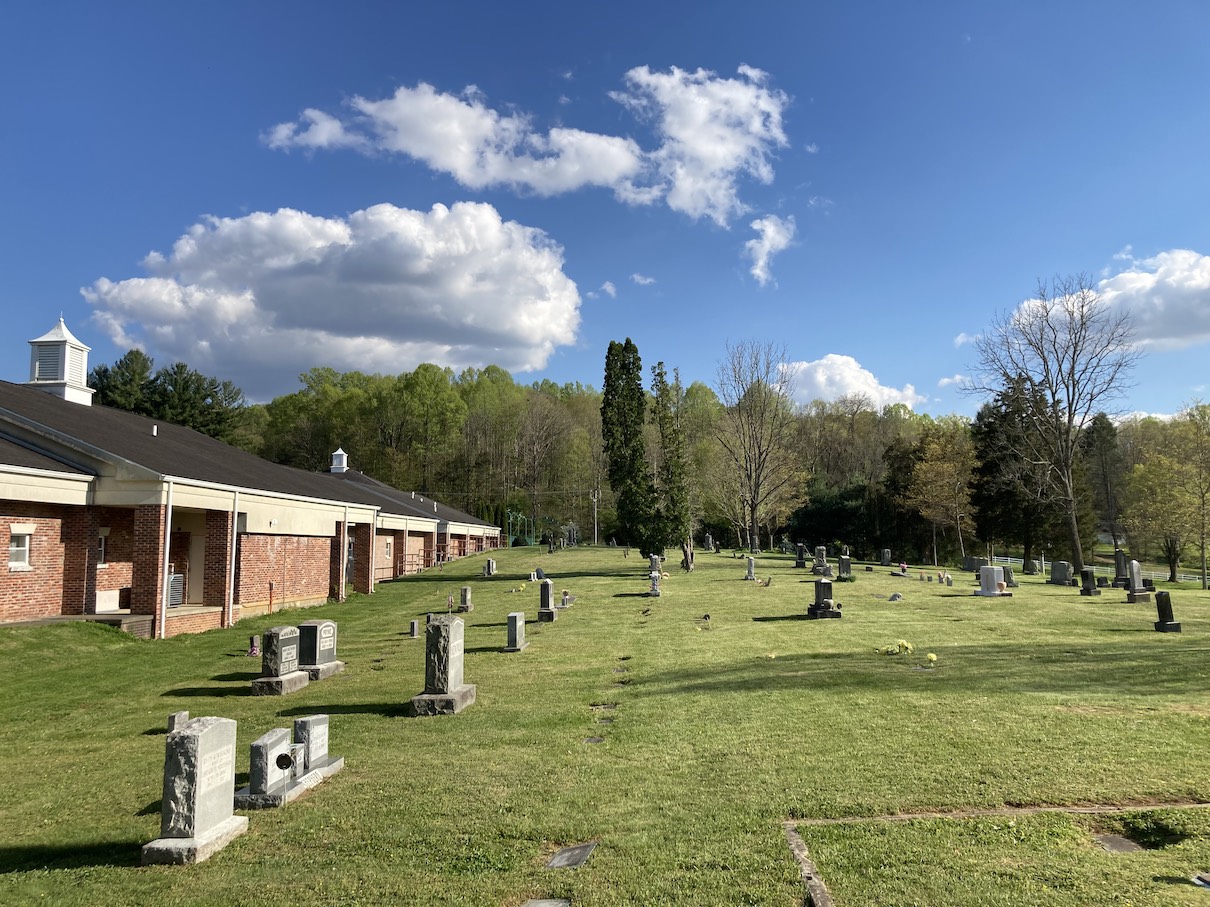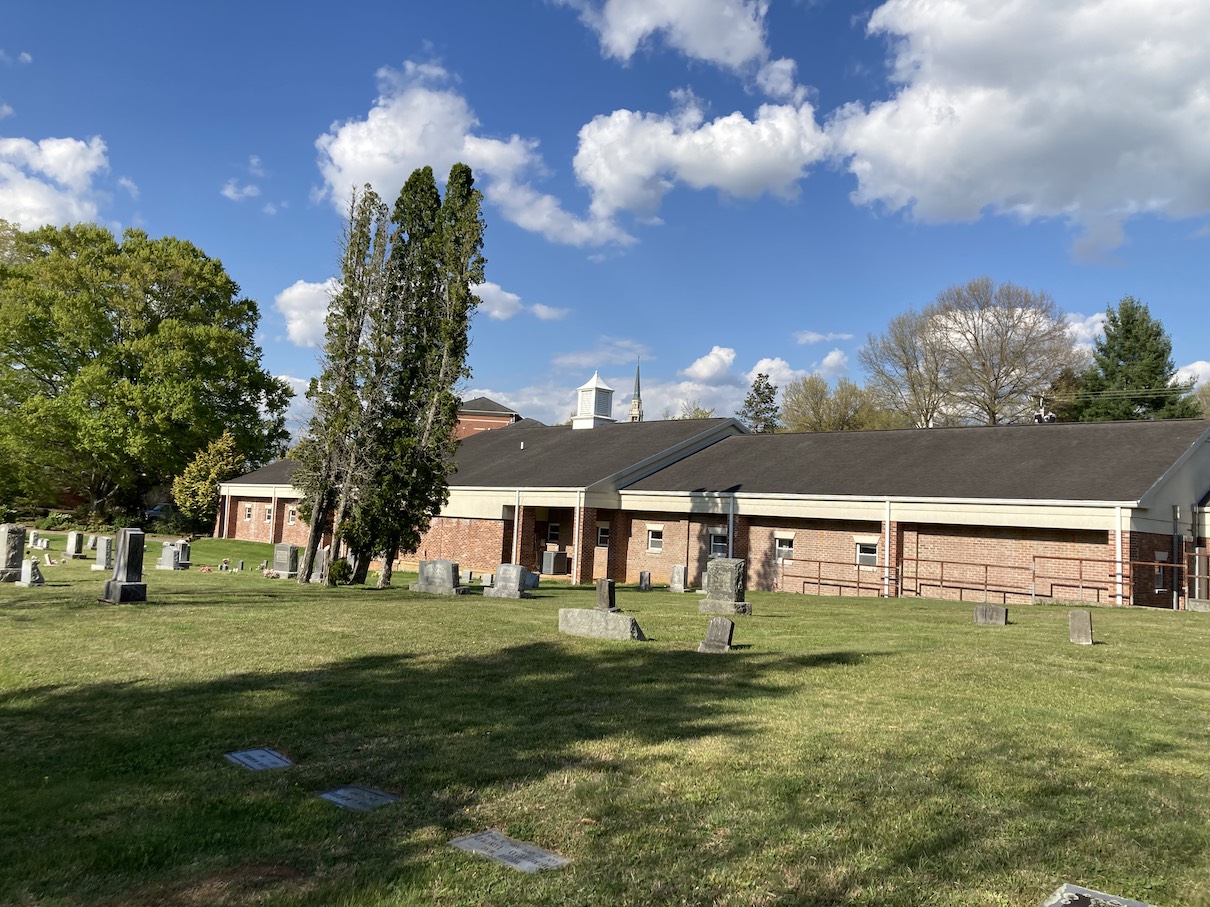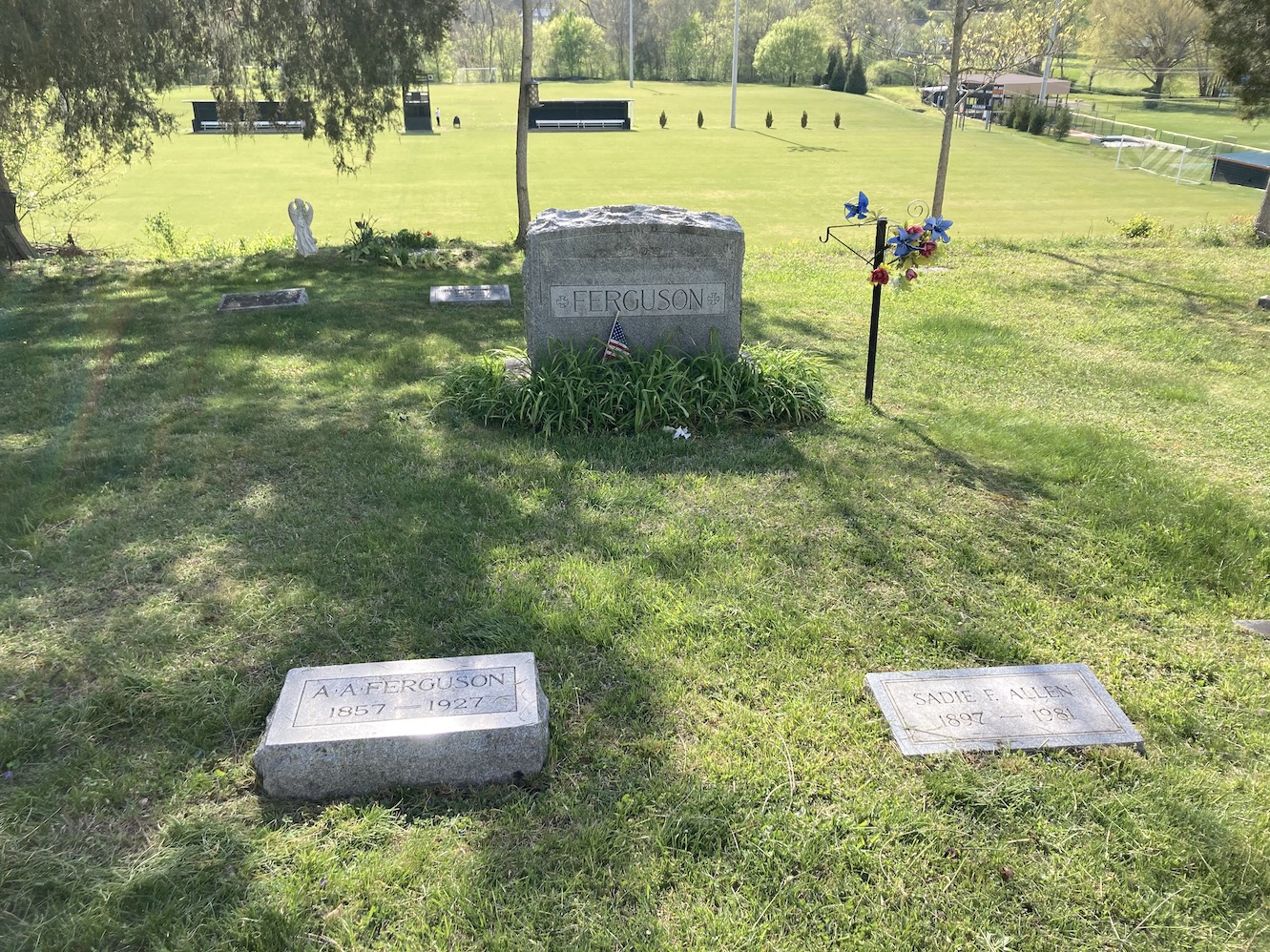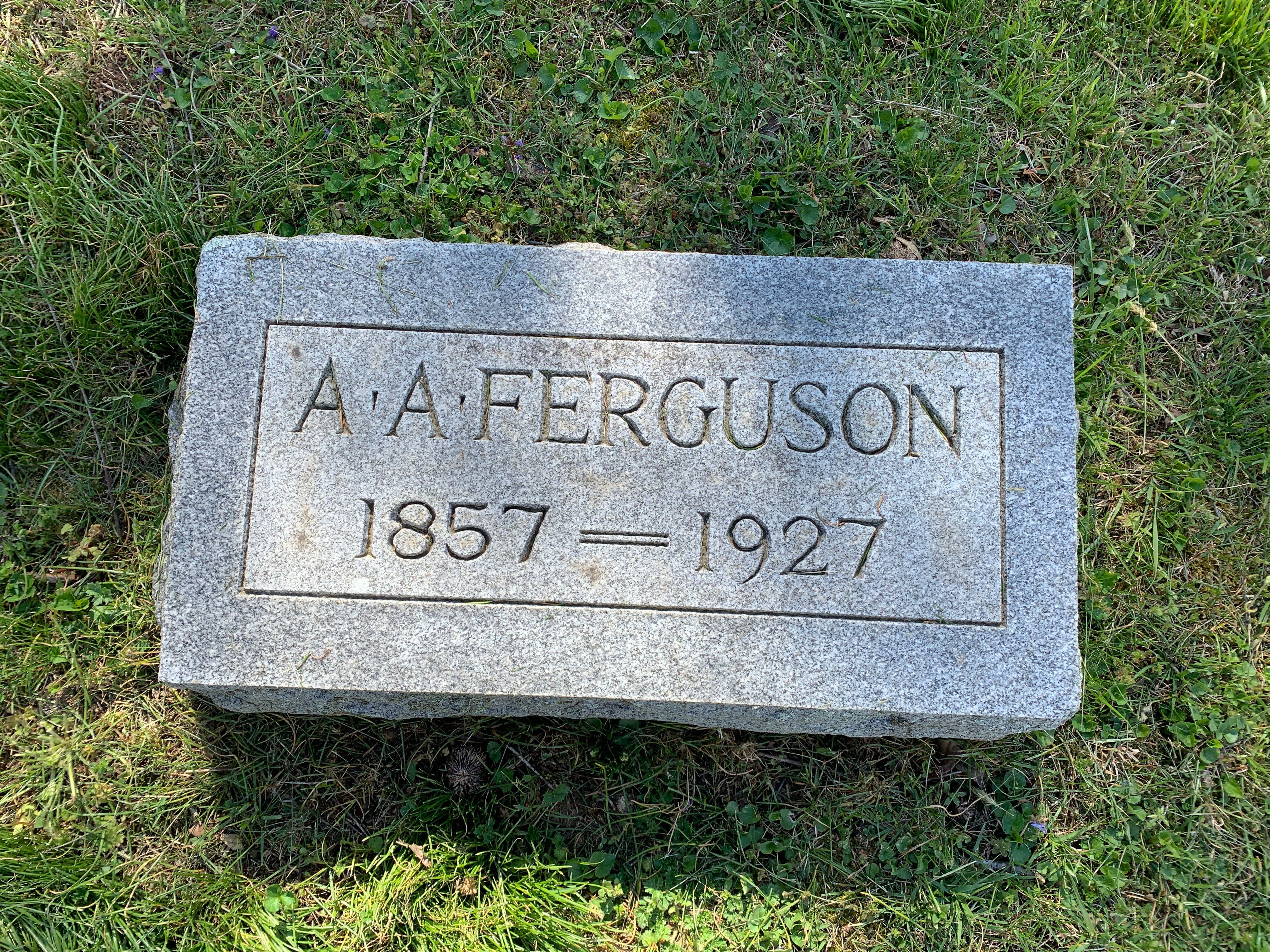Aaron Alexander Ferguson
1857-1927

Photo Source: J.W. West, Sketches Of Our Mountain Preachers, p.82
![]()
The Life of Aaron A. Ferguson
Aaron Alexander Ferguson was born on September 5, 1857, in Russell County, Kentucky. He was the son of Anthony McKnight (1835-1915) and Mary Ann Ferguson (1852-1894). He had two brothers, Charles and Arthur, who died in their youth. His father was a gospel preacher who evangelized in eastern Tennessee and southwest Virginia for over forty years.
He attended the old Buffalo Institute in Carter County, Tennessee, under the tutelage of Josephus Hopwood. When the school received its new charter of Milligan College, in honor of the late educator, Robert Milligan, Aaron was part of the first graduating class in 1882 (History of the Disciples of Christ in Upper East Tennessee, by H. C. Wagner, p.157)
While at Milligan, he met and fell in love with a fellow student by the name of Mary Lucy “Minnie” Shelburne (1852-1894). She was the fifth child of Cephas Shelburne (1817-1865) and Lucy Jane Wiglesworth (1823-1889). The Shelburne family was steeped in Virginia Restoration History. Minnie’s father, grandfather, two uncles, and four brothers were in the ministry. It seemed apparent that her interest would be to find a man who would follow in the family “business.” The two were married about a year after graduation, on May 22, 1883, in Carter County, Tennessee. Three children were born to this union: Lucy M. Ferguson Miller (1884-1966), Anthony Shelburne Ferguson (1889-1972), and Arthur A. Ferguson (1894-1971).
Upon completing his studies at Milligan College, he went to Lexington, Kentucky, to attend the College of the Bible. Charles Louis Loos was president at the time. Sitting at the feet of J.W. McGarvey, S.M. Jefferson, Loos, and others gave him the next level of well-rounded education and preparation for a lifetime of dedicated service in the cause of Christ.
In 1884, after two years of studies at Lexington, he moved to Tazewell County in Southwest Virginia. In the town of Tazewell, the Christian movement had been in the region since the 1830s. Long-time preacher Newton Harmon wrote of the earliest work, “A log church house was erected in Bluestone Valley, about five miles below Springville...Later, the members formed other congregations in other neighborhoods, which so depleted Old Antioch that regular services were abandoned...Many of the old members of Antioch and their descendants became members of Springfield, Bluefield, VA, and Falls Mills Churches." (John Newton Harmon, Sr., Annals of Tazewell County, 1800-1922, Vol. 2, p. 320 | https://www.ctssites.com/vatazewell/Disciples.htm).
When the Fergusons arrived, they immediately attached themselves to a new work in the town of Tazewell. Both he and Harmon helped to get the work there going. Aaron also preached some for the Springville church.
In 1886, a call came from over near the east coast. Aaron went to Essex County, Virginia, where he worked to strengthen the church. While there, he began going down to Mathews County on the coast, where he preached some in the Matthews Courthouse. The following year he moved there and spent about a year. In the spring of 1888, he moved to Roanoke, VA, where he preached in that city.
After two years, a teaching opportunity arose back in Tazewell County. He, along with Dr. R. B. Gillespie and Dr. Calvin S. Blackwell, determined to open a school for men and boys. The land was purchased from C. H. Improvement Co., and a building was built, “the site to be on the high point known as Hotel Park.” (Leslie, Louise, Tazewell County, p.605) Buildings and land cost around $7000.00. Tazewell College opened its doors in the fall of 1891. Ferguson served as principal of the school for three years. Minnie, also very much an educator in her own right, taught at Tazewell Female Seminary.
The family was hit with bad news around this time when doctors determined that Minnie had developed consumption (pulmonary tuberculosis). Her health failed rapidly until she passed quietly in the home of Dr. Gillespie on Monday, July 23, 1894. The newspaper reported, “In the death of this good woman, our community has sustained a severe loss. No more amiable lady ever blessed society here. In church and benevolent work, she always took great interest and acted as a leading part. Her influence over the young ladies and her pleasant demeanor toward her associate teachers, while connected with the Tazewell Female Seminary, first drew public attention to her beauty of character. Her modesty was as marked as her merit—dominating her entire being. It gave special emphasis to her naturally sweet voice. Her singing at the receptions at the Seminary received the warmest recognition. Without an enemy, with the sanor (sic) of a well spent life left behind to bless society, she has passed to the happier and more congenial associations of a better life while we are left to mourn our loss. The stricken family have our warmest sympathy.” (The Tazewell Clinch Valley News, July 27, 1894, p.1) She left behind a loving husband and three children, Lucy M. Ferguson Miller (1884-1966); Anthony Shelburne Ferguson (1889-1972); and Arthur A. Ferguson (1894-1971). According to the Roanoke Daily Times, Wednesday, July 25, 1894, page 2, she was buried in Christiansburg, Virginia. (Note: At the time of this writing it is still uncertain as to the exact location.)
After Minnie’s death, Aaron poured himself into his work. He continued working in the school and regularly entered the evangelistic field. From 1894 until 1896, he preached for the church in Lynchburg, Virginia. He remarried Rosalind "Rosa" Wertenberger Roberts (1871-1950) on August 2, 1895. They were married in Sullivan County, Tennessee. Rosa served her husband well as an excellent mother to Minnie’s young children as well as her own, as the couple had three more daughters, and a son, Sadie Ferguson Allen (1897-1981); Blanch Ferguson (1897-1976); Pauline Ferguson (1899-1968); and William M. Ferguson (1903-1945)
In 1896 Tazewell College named A.A. Ferguson President of the College. This was a role he served until 1907. J. W. West included himself when enlisting some of Ferguson’s ministerial students there, “J. W. West, D. M. Austin, H.J. Dudley, J. C. Reynolds, D. M. Scott, Robert D. Scott, (now a teacher in Christian Normal Institute, of Grayson, Ky.), a Mr. Reynolds of Pittsylvania County, Va., and a Mr. Higginbotham, who studied and practiced law later.” (West, J. W., Sketches of Our Mountain Pioneers, pages 82-84.)
In the summer of 1899, Aaron became minister of the Christian Church in Johnson City, Tennessee. While there, the church building was remodeled, and the seating capacity almost doubled. (History of the Disciples of Christ in Upper East Tennessee, by H. C. Wagner, p.89) He was there for three years.
In 1903 the family moved to Rockwood, near Chattanooga, Tennessee, to evangelize. In June of 1907, they moved back to Johnson City. The following year they moved to Kinston, North Carolina, where they lived and worked for sixteen months with the West Gordon Street Disciples of Christ. In 1910 the family moved to Elizabethton, Tennessee, where they built a home. There, his parents lived with them on a farm in Happy Valley, also known as Watauga Valley.
A.A. Ferguson strongly supported the Tennessee Annual Convention of the Disciple of Christ. At the annual meeting at Harriman, Tennessee, in October 1905, he was elected president of the convention for the following year. (The Christian-Evangelist, News From The Field, “The Tennessee Convention,” November 2, 1905, page 1431).
An opportunity arose in 1911 for Aaron to return to his old alma mater, Milligan College. He served as a professor of Church history, Greek, and mathematics. In 1912 he served as Dean of the college. At the end of the year, the family moved back to the farm in Elizabethton, but he continued to teach at Milligan until 1915. During his time as a professor, he held a full-time preaching position at Kingston, North Carolina (1911-1913). Milligan College was always near and dear to his heart. Several years later, he returned to the campus to teach for one year in 1922.
In June 1916, he was called to the Disciples church at Erwin, Tennessee, where he was paid a salary of $1200 per year. (History of the Disciples of Christ in Upper East Tennessee, by H. C. Wagner, p.106) In 1924 the family moved into a new home in Elizabethton.
For the next three years, his health began declining, causing him to relinquish much of the preaching and teaching to which his life had been committed. Finally, on January 7, 1927, at the age of sixty-nine years, four months, and two days, he passed away to the land beyond. Burial occurred among the sainted dead in the Milligan Cemetery on the college grounds. Rosa continued living until her death in 1950, when her body was buried next to her husband.
Thus, came to an end the great personal hands of influence of the Fergusons, over 100 years of labor, both father and son, within the Restoration Movement in Southern Virginia, North Carolina, and Tennessee. Only eternity will determine the good they accomplished for the cause of Christ.
-Scott Harp, 10.24.2022
![]()
Obituary for Minnie Ferguson
Tazewell Clinch Valley News, Tazewell, Virginia
July 27, 1894, p.1
![]()
Advertisement For Tazewell College
Tazewell Clinch Valley News, Tazewell, Virginia
November 12, 1897, p.7
![]()
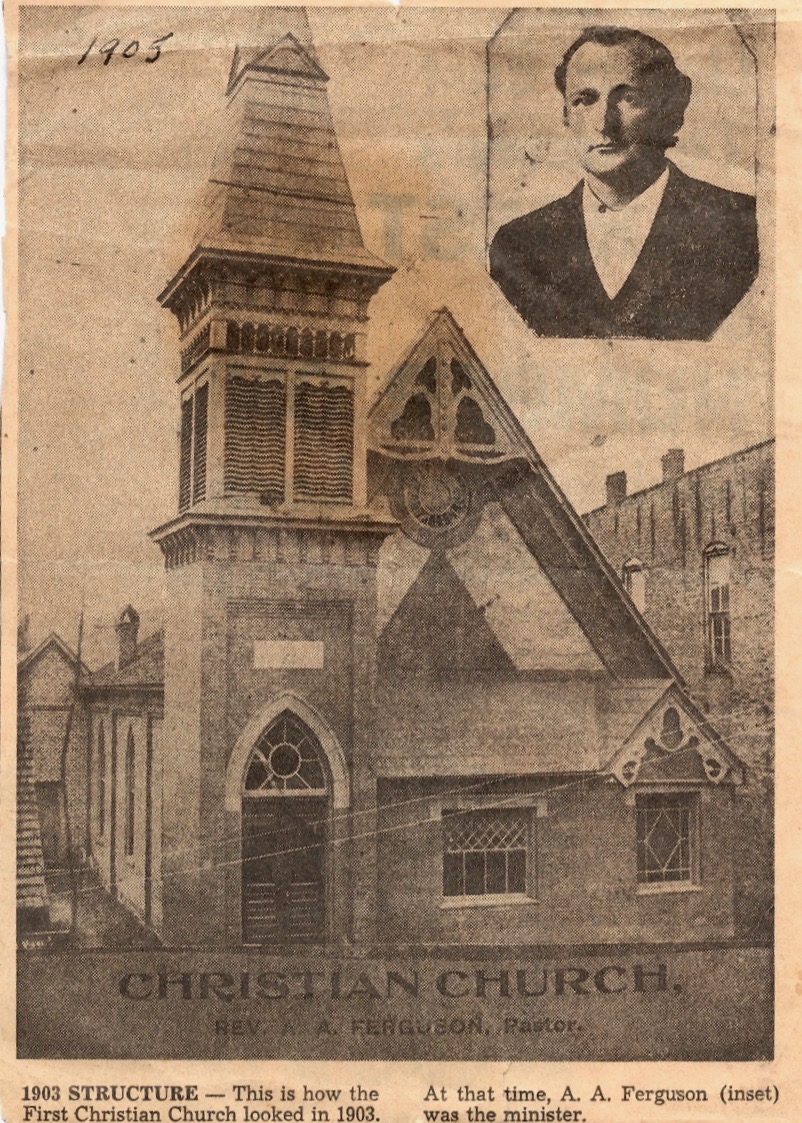
Christian Church, Erwin, Tennessee - 1905
![]()
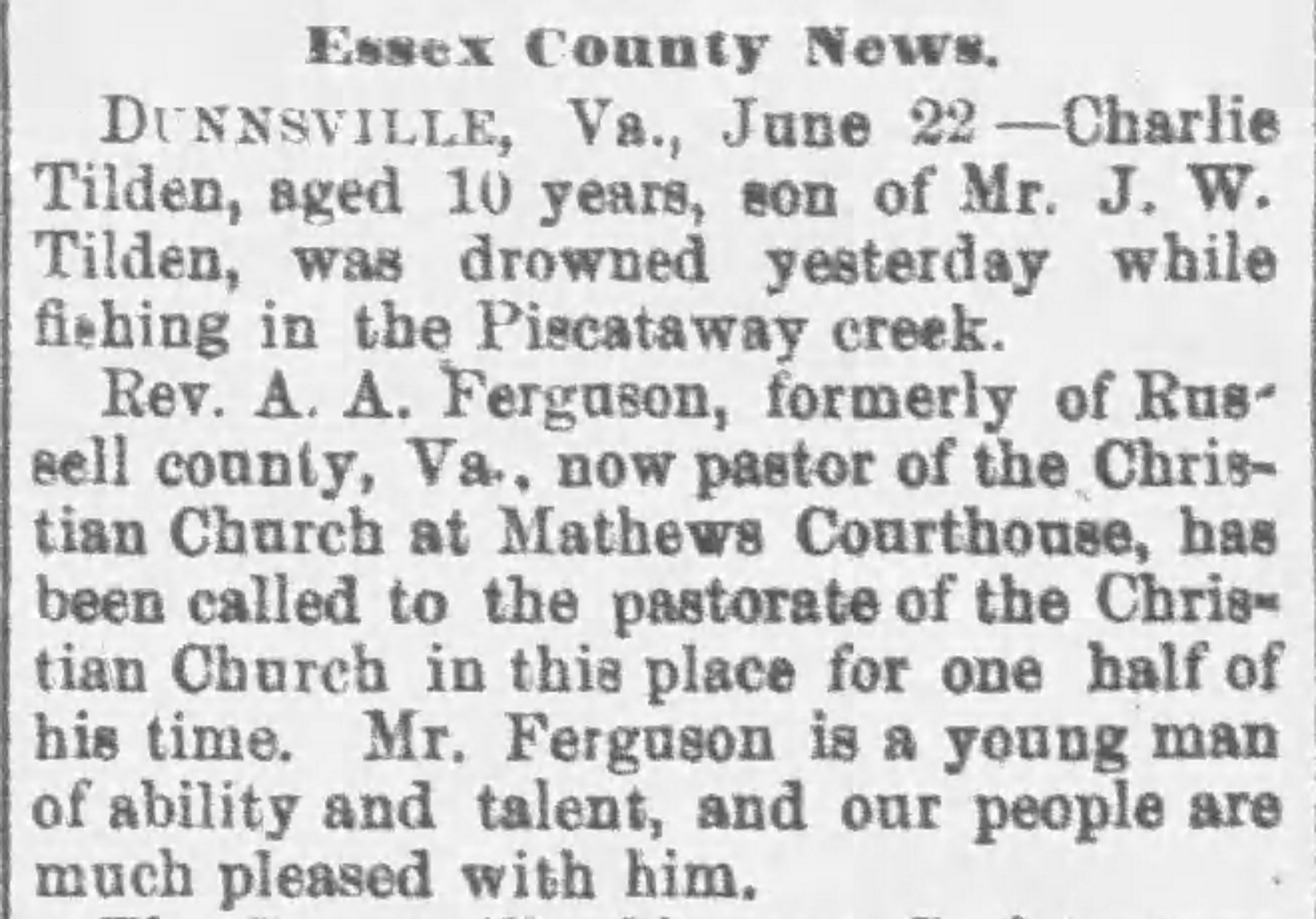
The Norfolk Virginian, Norfolk, Virginia
Friday, June 25, 1886, p.1
![]()
Roanoke Daily Times, Roanoke, Virginia,
Sunday, October 25, 1891, p.3
![]()
Roanoke Daily Times, Roanoke, Virginia,
August, August 16, 1892, p.5
![]()
Roanoke Daily Times, Roanoke, Virginia,
Wednesday, August 7, 1895, p.4
![]()
The Comet, Johnson City, TN,
Thursday, July 13, 1899, p.3
![]()
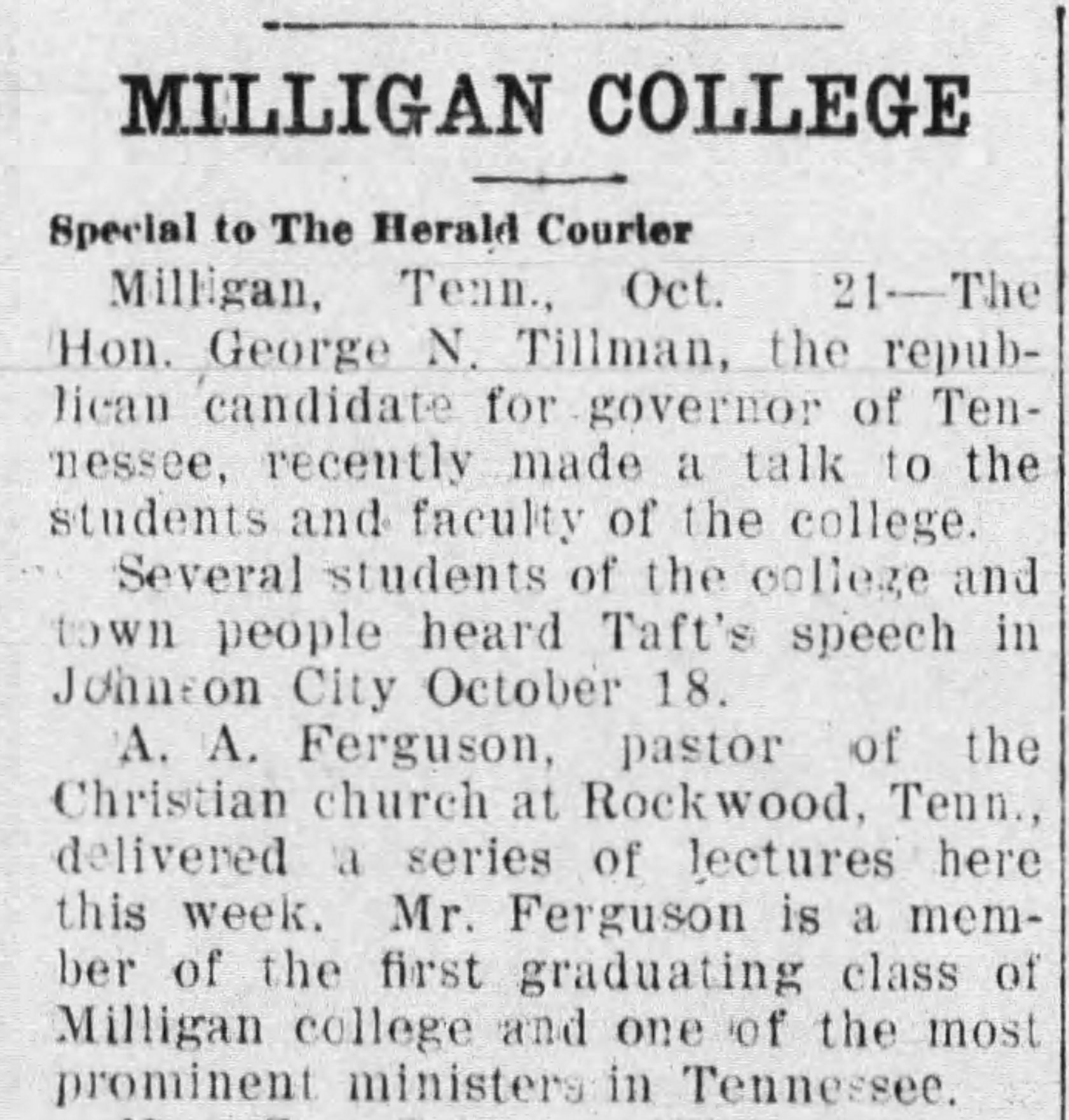
The Bristol Herald Courier, Bristol, Tennessee
October 22, 1908, page 3
![]()
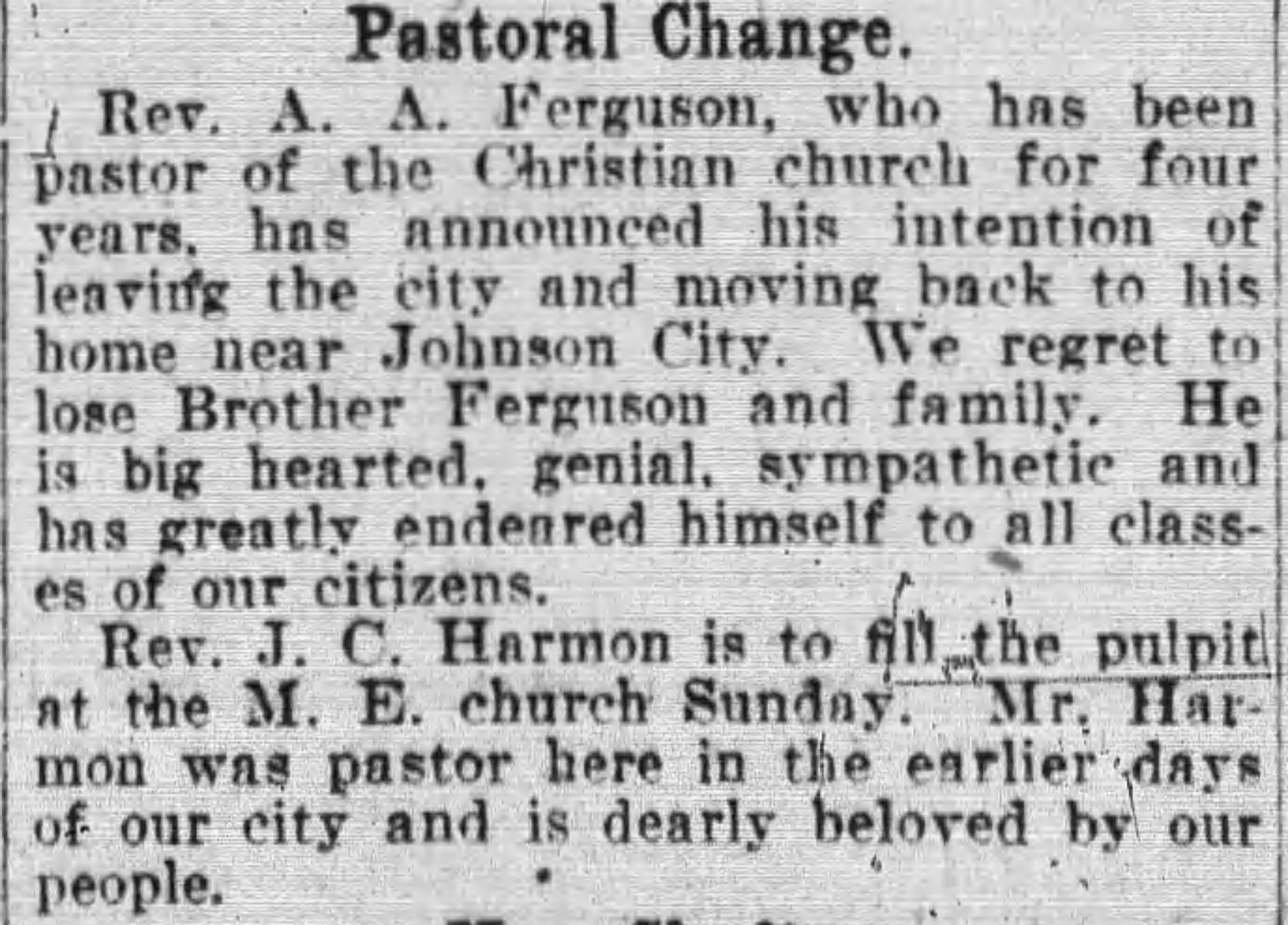
The Chattanooga News, Chattanooga, Tennessee
Saturday, June 29, 1907, p.13
![]()
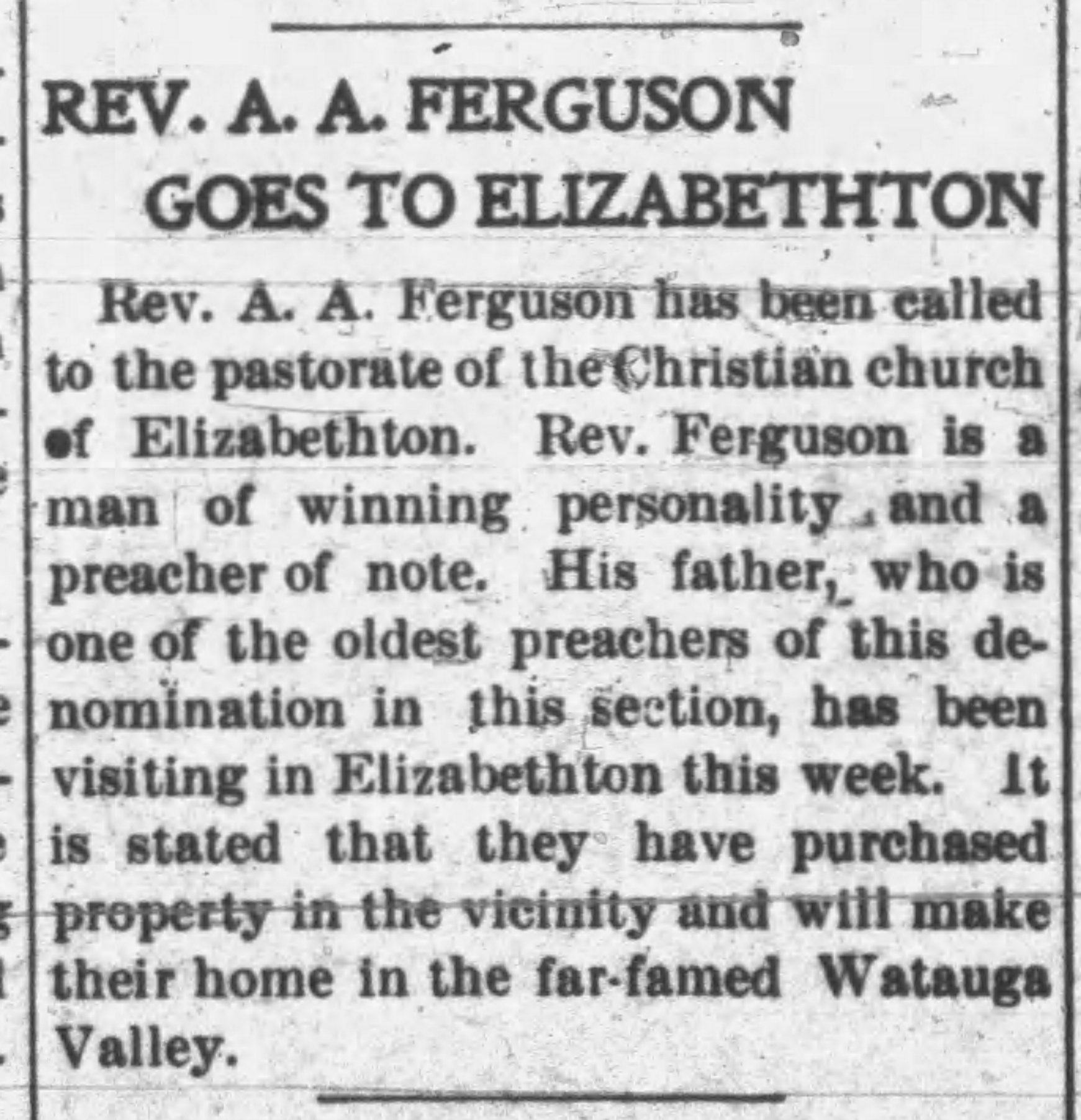
The Johnson City Comet, Johnson City, Tennessee
Sunday, April 10, 1910, p.1
![]()
The Journal and Tribune, Knoxville, Tennessee
Thursday, November 25, 1915, p.5
![]()
Daily Press Newport News, Newport News, VA
Saturday, January 8, 1927, p.1
![]()
Johnson City Staff News, Johnson City, Tennessee
Friday, January 7, 1927, p.9
![]()
Directions To Grave
In East Tennessee, take I-24 and head south of Johnson City, Tennessee. Take Hwy. 359/Milligan Hwy. Enter the campus on Blowers Blvd. Take the 3rd right and park somewhere. Head toward the rear and you'll see Williams Cemetery Also known as Milligan College Cemetery. It is located between the Baker Faculty Office Center and the tennis courts.
GPS Location
36°17'52.4"N 82°17'43.9"W
36.297900, -82.295533
![]()
![]()
Photos Taken 04.19.2021
Webpage produced 10.24.2022
Courtesy Of Scott Harp
www.TheRestorationMovement.com
Special Recognition: C. Wayne Kilpatrick and Tom Childers traveled with your webeditor to East Tennessee to locate the final resting place of A. A. Ferguson. Many thanks to all. Some of the photos on this page were taken by Tom. Also, I should remember a kind lady whose name I can not recall who was visiting the cemetery the day we were there. She was most friendly and most helpful. She had grown up around the college and had been connected with someone in its faculty. When we arrived, we were only looking for the graves of Samuel Shelburne and A. A. Ferguson. When we told her what we were doing, she proceeded to show us a few other graves of special people in the cemetery. One was that of Dr. Orvel C. Crowder, and others—former presidents, teachers and dignitaries of Milligan College. So, many, many thanks to that kind lady.
![]()

